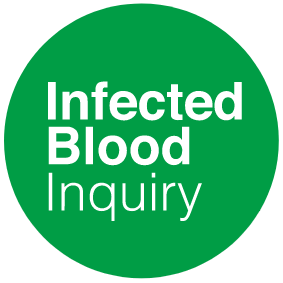Infected blood scandal in the United Kingdom
(Redirected from Contaminated blood scandal in the United Kingdom)
A public health scandal in the UK involving contaminated blood products
The Infected Blood Scandal in the United Kingdom refers to a major public health crisis that occurred during the late 20th century, involving the contamination of blood products with HIV and Hepatitis C. This scandal primarily affected individuals with haemophilia and other blood disorders who required regular blood transfusions or blood product treatments.
Background[edit | edit source]
During the 1970s and 1980s, the UK imported large quantities of blood products, such as Factor VIII, to treat patients with haemophilia. These products were often sourced from high-risk populations, including prisoners and individuals in the United States, where blood donation was paid. This practice increased the risk of contamination with blood-borne viruses.
Contamination and Impact[edit | edit source]
The contaminated blood products led to thousands of patients being infected with HIV and Hepatitis C. The impact was devastating, with many patients developing AIDS and chronic liver disease, leading to significant morbidity and mortality.
The scandal highlighted serious deficiencies in the screening and testing of blood products, as well as the regulatory oversight of blood safety. It also raised ethical concerns about the informed consent process and the communication of risks to patients.
Government Response[edit | edit source]
The UK government faced significant criticism for its handling of the crisis. Initial responses were slow, and there was a lack of transparency in acknowledging the extent of the problem. Over the years, various compensation schemes were established, but many victims and their families felt these were inadequate.
Inquiries and Legal Actions[edit | edit source]
Several inquiries have been conducted to investigate the scandal, including the ongoing Infected Blood Inquiry, which was established to examine the circumstances leading to the use of contaminated blood products and the impact on those affected. The inquiry aims to provide recommendations to prevent such a tragedy from occurring again.
Public and Media Reaction[edit | edit source]
The scandal received widespread media attention and public outcry. Advocacy groups and affected individuals campaigned for justice and accountability, leading to increased awareness and policy changes regarding blood safety.
Legacy[edit | edit source]
The infected blood scandal has had a lasting impact on public health policy in the UK. It led to significant changes in the regulation of blood products, including improved screening and testing procedures, and a move towards self-sufficiency in blood product supply.
Related pages[edit | edit source]
Search WikiMD
Ad.Tired of being Overweight? Try W8MD's physician weight loss program.
Semaglutide (Ozempic / Wegovy and Tirzepatide (Mounjaro / Zepbound) available.
Advertise on WikiMD
|
WikiMD's Wellness Encyclopedia |
| Let Food Be Thy Medicine Medicine Thy Food - Hippocrates |
Translate this page: - East Asian
中文,
日本,
한국어,
South Asian
हिन्दी,
தமிழ்,
తెలుగు,
Urdu,
ಕನ್ನಡ,
Southeast Asian
Indonesian,
Vietnamese,
Thai,
မြန်မာဘာသာ,
বাংলা
European
español,
Deutsch,
français,
Greek,
português do Brasil,
polski,
română,
русский,
Nederlands,
norsk,
svenska,
suomi,
Italian
Middle Eastern & African
عربى,
Turkish,
Persian,
Hebrew,
Afrikaans,
isiZulu,
Kiswahili,
Other
Bulgarian,
Hungarian,
Czech,
Swedish,
മലയാളം,
मराठी,
ਪੰਜਾਬੀ,
ગુજરાતી,
Portuguese,
Ukrainian
Medical Disclaimer: WikiMD is not a substitute for professional medical advice. The information on WikiMD is provided as an information resource only, may be incorrect, outdated or misleading, and is not to be used or relied on for any diagnostic or treatment purposes. Please consult your health care provider before making any healthcare decisions or for guidance about a specific medical condition. WikiMD expressly disclaims responsibility, and shall have no liability, for any damages, loss, injury, or liability whatsoever suffered as a result of your reliance on the information contained in this site. By visiting this site you agree to the foregoing terms and conditions, which may from time to time be changed or supplemented by WikiMD. If you do not agree to the foregoing terms and conditions, you should not enter or use this site. See full disclaimer.
Credits:Most images are courtesy of Wikimedia commons, and templates, categories Wikipedia, licensed under CC BY SA or similar.
Contributors: Prab R. Tumpati, MD


